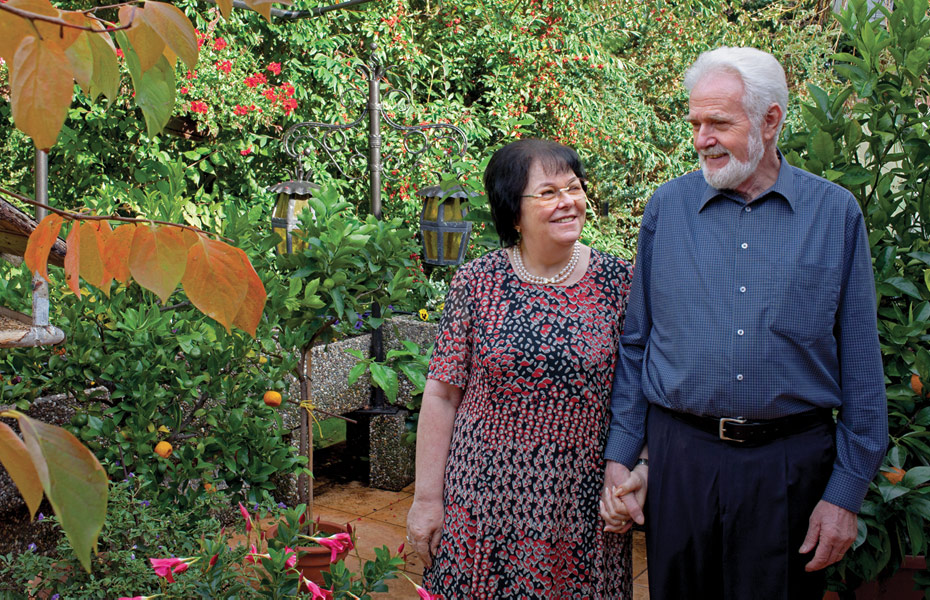
LIFE AFTER STROKE The REVIVE™ SE Device helped save Brunhilde Wecker's life when she suffered a stroke. She enjoys her active lifestyle and time in her garden with her husband, Ehrenfried.
Reviving and Recovering
When Ehrenfried Wecker of Wiesenbach, Germany, returned home from the bakery with breakfast rolls one morning in August, he found his wife, Brunhilde, in bed, waving at him with one arm and unable to speak.
“I took her other hand and when I let it go, the hand just fell down,” he says. He realized she couldn't move her right side. “I knew immediately that my wife had a severe stroke and that every minute would count,” Mr. Wecker says. An ambulance rushed Mrs. Wecker, 64, to the hospital, where evaluation including an MRI showed she was experiencing an acute ischemic stroke, a blockage of an artery leading to the brain.
Each year 15 million people suffer stroke worldwide. Of these, 5 million die and another
5 million are permanently disabled.
The minimally invasive procedure took only 25 minutes, an advantage because the damage can become more serious the longer the brain is deprived of blood.
“The patient could have suffered severe permanent impairment or could have died,” says her surgeon, Prof. Martin Bendszus, M.D., Chairman, Department of Neuroradiology, University Hospital of Heidelberg, Germany.“But she could move her body and speak the next day, and left the hospital one week later. She's absolutely fine now—it's really amazing.”
The hospital now routinely uses the REVIVE™ SE Device for acute ischemic stroke. “It's rare that you experience a change in paradigms in medicine,” Prof. Bendszus says. “It's dramatic.”
SIGNIFICANT NEED
Each year 15 million people suffer stroke worldwide. Of these, 5 million die and another 5 million are permanently disabled. Stroke is the leading cause of death after heart disease and cancer, and a leading cause of serious long-term disability. Hemorrhagic strokes occur when an artery in the brain bursts; ischemic strokes, in which blood flow to the brain is blocked, account for about 90 percent of strokes each year.
The REVIVE™ SE Device is the first device from Codman & Shurtleff, Inc. for ischemic stroke and marks a new growth area for the Johnson & Johnson company, which is developing additional stroke products. “This is the beginning of a long-term commitment to bring forward more innovations that advance the treatment of stroke and improve patient care and outcomes,” says Karen Prange, General Manager and Vice President, Codman Neurovascular Business.
The company received European Union approval for the REVIVE™ SE Device in February 2011 and launched the device there in September. While it is not approved for distribution in the United States, clinical trials are being planned for potential future use.
The REVIVE™ SE Device represents the success of the September 2010 acquisition of Micrus Endovascular Corporation, a global developer and manufacturer of minimally invasive devices for hemorrhagic and ischemic stroke. It now operates under Codman Neurovascular, a global neuroscience and neurovascular company that develops and markets products for the diagnosis and treatment of neurological disorders. Codman is part of the DePuy Family of Companies, which has a rich history of pioneering products in orthopaedic and neurological care. A fast-growth area, the neurovascular market is expanding at more than 10 percent annually.
